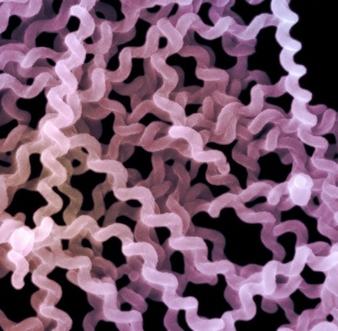Leptospirosis is an infectious disease caused by leptospira - microorganisms that live everywhere in conditions of high heat and excessive humidity. Leptospirosis is most common in people living in tropical countries. The carriers of the infection are animals: dogs, shrews, pigs, rats, etc. A person who becomes ill with leptospirosis does not pose a danger to other people.
Leptospirosis in humans: infection
The infection enters the body of animals through food or water. Human infection occurs through the skin through contact with water contaminated with animal secretions or moist soil. You can also get the infection by butchering contaminated meat or eating contaminated foods. Most often, veterinarians and farm workers are exposed to leptospirosis. The disease is seasonal, with infections occurring in August. For a person to become ill with leptospirosis, even a fleeting contact with contaminated water is enough. If there is even the slightest damage to the skin, leptospira easily penetrate the body. They can also get inside through the mucous membranes or the conjunctiva of the eyes. Once in the body, microbes begin to move through the lymphatic system. But in the lymph nodes they do not cause inflammatory processes, but through them they easily penetrate into organs and tissues, where they begin to multiply and accumulate. The incubation period lasts up to 2 weeks. Then leptospira affect the kidneys, liver, central nervous system, spleen, lungs. They release their toxins into the bloodstream, causing severe intoxication, destroying red blood cells and disrupting the function of blood clotting.

Leptospirosis in humans: symptoms
First, a person's temperature rises sharply, signs of intoxication appear, such as headache, chills, nausea, sleep disturbance, constant thirst. In this case, the harbingers of leptospirosis have not yet been observed, although it is already possible to detect leptospira in the blood and cerebrospinal fluid. Similar symptoms persist for 4 to 9 days. This is how the first phase of the disease manifests itself - leptospiremia. Then muscle pains begin to appear. On palpation of the muscles of the thighs, calves and lower back pain occurs. There may be redness of the neck, face, chest. Some people develop a rash, diarrhea, cough, sensory impairment. In severe cases, as a result of toxemia of internal organs, there is a risk of meningitis, renal failure, jaundice,
Leptospirosis in humans: diagnosis
To establish a diagnosis, carry out As already mentioned, it is possible to identify leptospira in the cerebrospinal fluid or blood. If the disease has passed into the phase of toxemia of internal organs, microorganisms are found in the urine. Sometimes doctors cannot immediately recognize leptospirosis and begin to suspect the patient has hepatitis, meningitis, nephritis and other pathologies.

Leptospirosis in humans: treatment
Often the patient's condition requires implementation. The disease is very serious, in 10% of cases it ends with the death of the patient. The prognosis of recovery depends on the state of the body and on the degree of disease-causing leptospira. Treatment is carried out by taking antimicrobial agents such as Levomycetin, Streptomycin, Penicillin, Erythromycin. To obtain a therapeutic effect, medications should be started after no more than four days have passed since the moment of infection.
Prevention of leptospirosis
The main preventive methods are veterinary and sanitary measures, consisting in the identification and treatment of sick animals. It is possible to limit the spread of leptospira by leptospirosis vaccination of humans and animals. It is unacceptable to use water from dirty sources.

